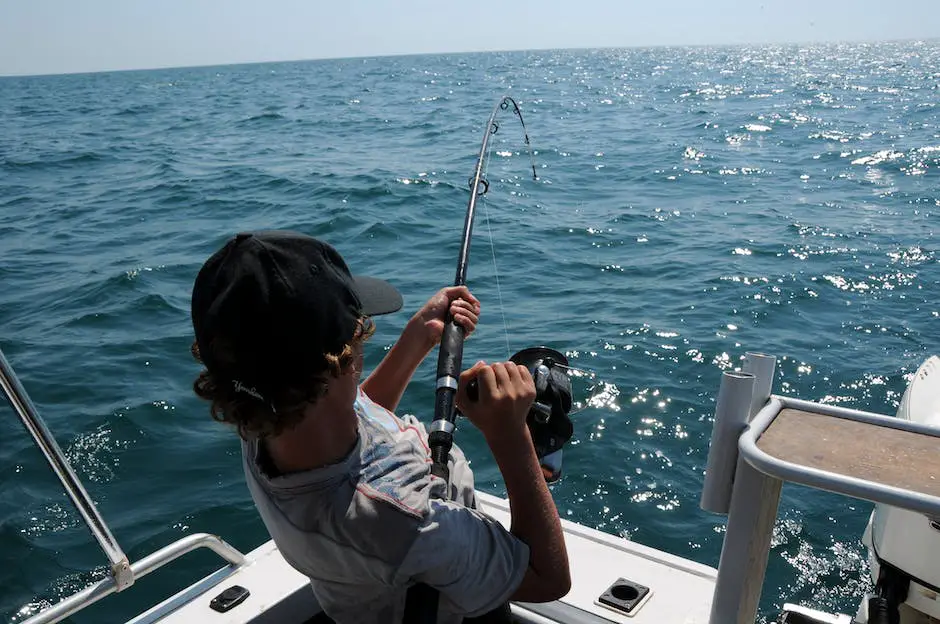Imagine the thrill of casting a line into Tennessee’s pristine waters, feeling the tug of a catch, and reeling in a prize fish. Whether you’re an experienced angler or a novice enthusiast, enjoying this adventure starts by understanding Tennessee’s fishing regulations, size limits, licensing requirements, and the potential penalties for overfishing. Our waters are teeming with a variety of fish, from Bass and Crappie to Catfish and Trout, and each species comes with specific guidelines to ensure its preservation and the health of our underwater ecosystem. By following these laws not only will you make your fishing experience more enjoyable, but you also contribute to sustainable fishing practices that maintain the beauty and diversity of Tennessee’s aquatic life.
Understanding Tennessee Fishing Regulations
The Sprawling Importance of Tennessee’s Fishing Regulations
There’s something truly special about fishing in the Volunteer State. The crisp morning air in the Smoky Mountains, the flow of the Cumberland River, and the stillness of the lakes at sunrise spell out an angler’s paradise. Yet, navigating the waters isn’t just about grabbing a pole and casting a line. Benevolent enthusiasts know that to preserve our fishing ecosystem for future generations, understanding and respecting Tennessee’s fishing regulations are pivotal.
Fishing regulations, often regarded as an inconvenience or tedious read, are instrumental in preserving our waterways’ fish populations. They safeguard species from overfishing, promote a balanced ecosystem, and ensures that fishing can be appreciated for decades to come.
In Tennessee, fishing regulations control the number of certain types of fish one can catch per day, often termed ‘creel limits’. This measure exists to prevent any specific species from dwindishing too quickly – a consequence of unregulated hunting that could potentially throw the entire ecosystem into imbalance. Furthermore, to assist threatened or endangered species, ‘size limits’ may be set to protect juvenile fish, allowing them an opportunity to mature and reproduce before being caught.
The strategic measure of ‘seasonal restrictions’ also emanates from Tennessee’s fishing regulations. This ensures that fish are not caught during their spawning season where they reproduce, thus supporting the continued flourishing of fish populations. To intensify this effort, certain areas might be declared off-limits, facilitating undisturbed breeding grounds.
Moreover, Tennessee’s regulations inculcate responsible fishing ethics amidst anglers. The law insists on employing permitted fishing gear and methods so as to preserve the natural habitats, and to minimize injuries to the fish that are caught and released. This practice of ‘catch and release’ is promoted with specific rules, ensuring that even the fish that don’t make it to the fryer have a fair chance of survival.
Another dimension to Tennessee’s fishing regulations is the licensing system. Purchasing a license to fish is not just a formal acceptance to follow the rules, it’s an active contribution to the conservation mission. The revenue generated from licenses assists in funding researches, maintaining healthy habitats, and spawning operations that reintroduce millions of fish into Tennessee waters each year.
All in all, the role of Tennessee’s fishing regulations transcends ensuring a fair sport. Its pivotal nature lies in preserving aquatic biodiversity and sustaining a rich, healthy ecosystem. So the next time you’re baiting your hook for that catfish in the Mississippi, remember that it’s not just about the catch, but also respecting the law and preserving the vibrant fishing culture for generations to come. Happy fishing!

Tennessee Fish Size Limits
Exploring Size Limits for Tennessee Fish Species
Tennessee’s natural beauty is displayed in abundance through its picturesque lakes, rivers, and streams, teeming with a wonderful diversity of fish, making it a paradise for fishing enthusiasts. However, to protect and sustain this rich aquatic life, the Tennessee Wildlife Resources Agency (TWRA) has introduced certain fish size restrictions. Understanding these restrictions is vital for every angler, not only to follow the law but also to participate in maintaining the health and viability of the fish populations present in Tennessee.
In Tennessee, size restrictions vary by fish species. For example, the minimum length requirement for largemouth bass ranges generally from 14 to 18 inches depending on the water body. Smallmouth bass, known for their fighting spirit, have a similar range of 14 to 20 inches. For spotted or Kentucky bass, the restrictions are a bit more lenient, often requiring a minimum of 12 or 15 inches. Do keep in mind these size limits could be different at certain bodies of water, so always it’s always best to verify what applies where you’re fishing.
Moving on to Catfish, a popular catch for many Tennessee anglers. For channel and blue catfish less than 34 inches in length, the creel limit is 5 per day in combination. But for these same species, fish over 34 inches in length, only one per day is allowed. On the other hand, there’s no minimum length requirement or daily creel limit for catfish under 34 inches on certain bodies of water, such as the Tennessee River, its embayments, and the tributaries up to the first dam.
Crappie, famous for its delicious taste, has a minimum size requirement of 10 inches. Additionally, the daily catch limit is 15 fish per day, aiming to prevent overfishing and sustain their population.
For trout fishing, size limits are specifically based on species. Rainbow trout and brown trout must be a minimum of 7 and 14 inches respectively, while brook trout size limit stands at 6 inches. Conversely, the limit is 20 inches for Lake trout with a daily creel limit of 2.
Meanwhile, for Walleye and Sauger, another favorite catch especially during the cold months, the size limits stand at 16 and 15 inches respectively. Both species have a combined creel limit of 10 per day.
Paddlefish or Spoonbill are a unique species with unique restrictions. The paddlefish must be a minimum of 38 inches in length measured from the front of the eye to the fork of the tail, also known as “eye-fork length”. These measures are in place because paddlefish are a vulnerable species and overharvest can impact their population significantly.
Remember, these size limits aren’t just trivial rules – they play a crucial role in our collective quest for conservation, ensuring fishing remains a sustainable pursuit. Breaching these regulations can lead to depleted fish populations and long-term threats to biodiversity. By fishing within the guidelines, each angler contributes to the lasting vibrancy of Tennessee’s spectacular aquatic ecosystem. Let’s keep those fishing traditions alive for future generations to enjoy!

Fishing Licensing in Tennessee
Moving beyond a general understanding of the importance of regulations and the restrictions for catching fish of different size in the rich Tennessee waters, it’s now time to delve into the licensing requirements for Tennessee fishing.
Volunteering to be a part of fishing conservation and sustainability in Tennessee begins with obtaining the right license. As of now, Tennessee law requires any angler 13 years old or older to have a fishing license. It’s as simple – and vital – as that! Scrutinizing these licenses raises awareness on the importance of these regulations, thus creating a sense of honor for the passionate angler community.
Residents (people living in Tennessee for at least 90 days) have the choice between an Annual Hunting and Fishing Combination license, a One-Day Fishing license or a County of Residence Fishing license, giving you the ability to fish inside your county of residence with natural bait, but is strictly limited to the county of residence. If you’re only visiting, licenses are modified into Annual and One-Day fishing licenses for non-residents.
Juniors between 13 to 15 years old are eligible for a Junior Hunt, Fish & Trap license. This one is even more special because it comes with a multi-year validity until the holder’s 16th birthday.
Trout fishing has additional license requirements. In addition to the regular fishing license, anglers intending to catch trout need to purchase a trout license. Yet, the thrill of catching a rainbow or brown trout justifies the extra investment.
Also, it’s worth noting that the TWRA (Tennessee Wildlife Resources Agency) sets different prices for these licenses. Purchases also fund conservation efforts, making them a feel-good investment.
Licenses in Tennessee are readily available for purchase online through the TWRA’s official website, or at various TWRA regional offices, as well as numerous license agents spread out across Tennessee for your convenience.
Finally, if you feel like fishing without a license, the TWRA offers Free Fishing Day. On this special day, anyone can fish for free in Tennessee’s public waters without needing a license. Free Fishing Week, where kids aged 15 and under can fish without licenses, follows this day immediately. Mark the calendar: it typically falls in the second week of June.
While it may seem like there’s a bunch of spellwork involved in procuring the right license, knowing that you are doing your part in contributing to the preservation of the aquatic ecosystem of Tennessee is a reward in itself. Plus, tickets over a fishing license are quite steep, so it’s definitely better to be safe than sorry.
The fun part of fishing isn’t just the catch, but also adhering to the guidelines, respecting the limits and being the responsible angler that models best practices for the future generations to admire. Enjoy the tranquility, thrill, and occasional adrenaline rush that comes with fishing in Tennessee. License up and cast those lines!

Photo by drewfarwell on Unsplash
Laws and Penalties for Overfishing
Shifting focus from size restrictions and regulation basics, let’s delve into the repercussions faced when these rules aren’t followed. While it’s incredibly vital to respect and uphold these rules in the name of conservation and sustainability, it’s equally crucial to know what happens when we fall short.
To start,overstepping the mark with fishing size limits in Tennessee can indeed ruffle feathers. Those who make light of these regulations may receive warnings, fines, or even have their licenses suspended or revoked in more severe circumstances. The severity of the penalty typically reflects the nature and frequency of the infraction.
Speaking of fines, they usually start from $50 for minor violations and can balloon to $500 for more significant infringements. However, sizes aren’t the only thing taken into account. An angler bagging more fish than the daily limit allows can face similar fines. Remember, fines aren’t designed as a punishment, but rather as a wake-up call to the importance of maintaining healthy fish populations.
Furthermore, continual violations or particularly egregious offenses may land the angler in hot water with the Tennessee Wildlife Resources Agency (TWRA). Take this as a red flag, since a suspension or revocation of your fishing license may be imminent. Depending on the severity of the offense, license suspensions can last from a year to several years, or even indefinitely.
In addition to these penalties, the TWRA uses a point system to keep track of fish and wildlife law violations. A first-time violation of size limits is worth ten points. If an angler racks up more than 20 points over two years, their license can be suspended for anywhere from one to five years.
By now, it should be clear that the Tennessee authorities mean business when it comes to safeguarding the diversity and health of aquatic life. However, it’s equally clear that breaking these restrictions isn’t just a detriment to the environment – it’s also a huge hindrance to the freedoms and pockets of hobbyist anglers. Respecting the rules benefits us all, ensuring the beauty and richness of fishing in the Volunteer State remain for generations to come.
Never forget, the same passion that lets fishing thrill us should push us to protect our aquatic friends. It’s a responsibility as anglers. Our license isn’t just a piece of paper but a pact to safeguard the sustainability of Tennessee’s waters.

Fishing in Tennessee is an activity steeped in tradition and respect for nature. Knowing the regulations is a crucial part of this hobby. Whether it’s understanding size limits for various fish species, obtaining a fishing license, or being aware of penalties for overfishing, compliance is key. Remember, these rules aren’t there to restrict joy out of fishing, but instead, they are designed to protect our aquatic environment, ensuring that the thrill of landing that fantastic catch continues for generations to come. As responsible anglers, let us remain mindful of our role in preserving Tennessee’s rich fishing heritage, unique biodiversity, and scenic waterways. With respect and awareness, fishing in Tennessee will always be a rewarding experience.



Welcome to our blog!